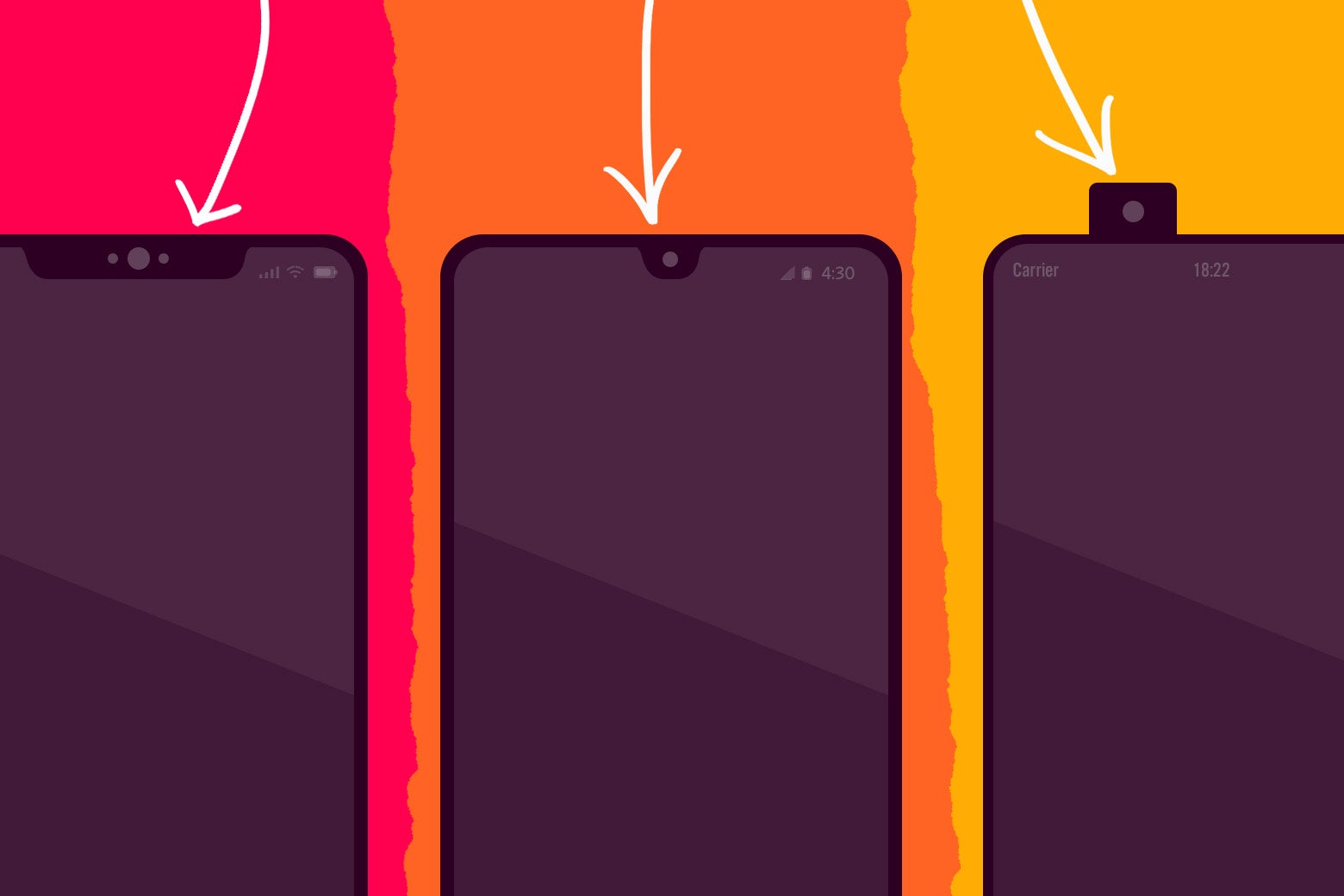In order to maximize every pixel of screen space, Apple and other smartphone manufacturers have turned to an option some consider visually offensive: the notch. The notch lunges down from the top of the screen, encircling your phone’s front-facing camera and sensors. In the past, phones just extended the phone’s entire bezel—the opaque bar between the screen and the edge of the phone—downward beneath the front-facing camera. But today, phone makers are inching toward a completely bezel-free design, and the notch is a byproduct.
It doesn’t have to be that way. A company called Vivo recently showed off a prototype for a bezelless smartphone called the Apex. To achieve this feat, it included an in-display fingerprint scanner—something major smartphone makers such as Apple and Samsung have been working on as well—but it also made another interesting change: Vivo moved the front-facing camera off the screen. Rather than forgo a front-facing camera altogether—which would fix this issue as well as our obsession with snap selfies in the first place—Vivo developed a camera module that pops up from the top of the phone, similar to the way flashes pop up on traditional cameras. It takes 0.8 seconds for the camera to jut out from the smartphone’s top, and in its hands-on time with the device, the Verge found the solution surprisingly sturdy and “a neat way to avoid the notch.”
Vivo isn’t the first to explore this imaginative concept. Another smartphone maker called Essential owns a patent for a similar pop-up phone idea. However, unlike Vivo, Essential ended up going with a notched design for its handset, the Essential Phone.
There’s good reason for that choice. As one famous quote puts it, “Hardware eventually fails. Software eventually works.” In a traditional computer, hardware components like the power supply, hard disk, and fan are usually among the first to break down due to wear and tear. It’s not hard to imagine that a camera module, after many hundreds or thousands of times popping up out of its hidden housing, would eventually get damaged and quit working. That’s not considering plausible scenarios like the phone falling to the ground midselfie and its camera snapping off. (And let’s be honest: If your phone had a pop-up camera, you know you’d absent-mindedly tap it open and closed over and over again, leading to additional wear and tear.)
In recent years, smartphone manufacturers have made phones more water-resistant by better sealing off areas like speakers from the rest of a phone’s water-sensitive internals and by reducing the number of places water can sneak into a handset, such as through the headphone jack. A mechanical camera module likely would be a liability for a phone’s water resistance and overall durability.
While it may not be the most viable solution, notch alternatives like Vivo’s pop-up camera module are still worth thinking about. Vivo’s ingenuity begs us to question the givens of the current state of smartphones. If a phone doesn’t have to have a camera on the front, perhaps other changes could also be made to deliver that bezel-free, notch-free display. Our phones could be a different shape, for example. Instead of rounded rectangles, the camera module simply could protrude from the top or side of the device. Or, given that cases are so popular, phones could do away with the front-facing camera and sensor technology and stick it in a case instead, allowing for greater modularity and customizability.
It could also push developments of in-display technologies like an embedded speaker or camera. Apple, which may be exploring ways to ditch the notch in future iPhones, could be working on this. A report out of South Korea suggested that Apple is working on a modified design where the screen completely covers the front of its 2019 OLED phone models. To do this, it would need to perfect an in-screen fingerprint reader, which Vivo’s prototype included, or move its positioning to the rear of the device, like on many Android handsets. It would also need to figure out ways to embed light, camera, and infrared sensors into or around the display itself.
With that in mind, achieving a notch-free, bezel-free phone by next year seems like a stretch. Realistically, as long as we’re into selfies, augmented reality emoji, and facial recognition, and as long as phones continue to maintain their rounded rectangular shape, we’re going to continue to see notches and bezels in our smartphones—but a pop-up camera mechanism is still a fun solution to consider that could help spark greater creativity in the smartphone space.
